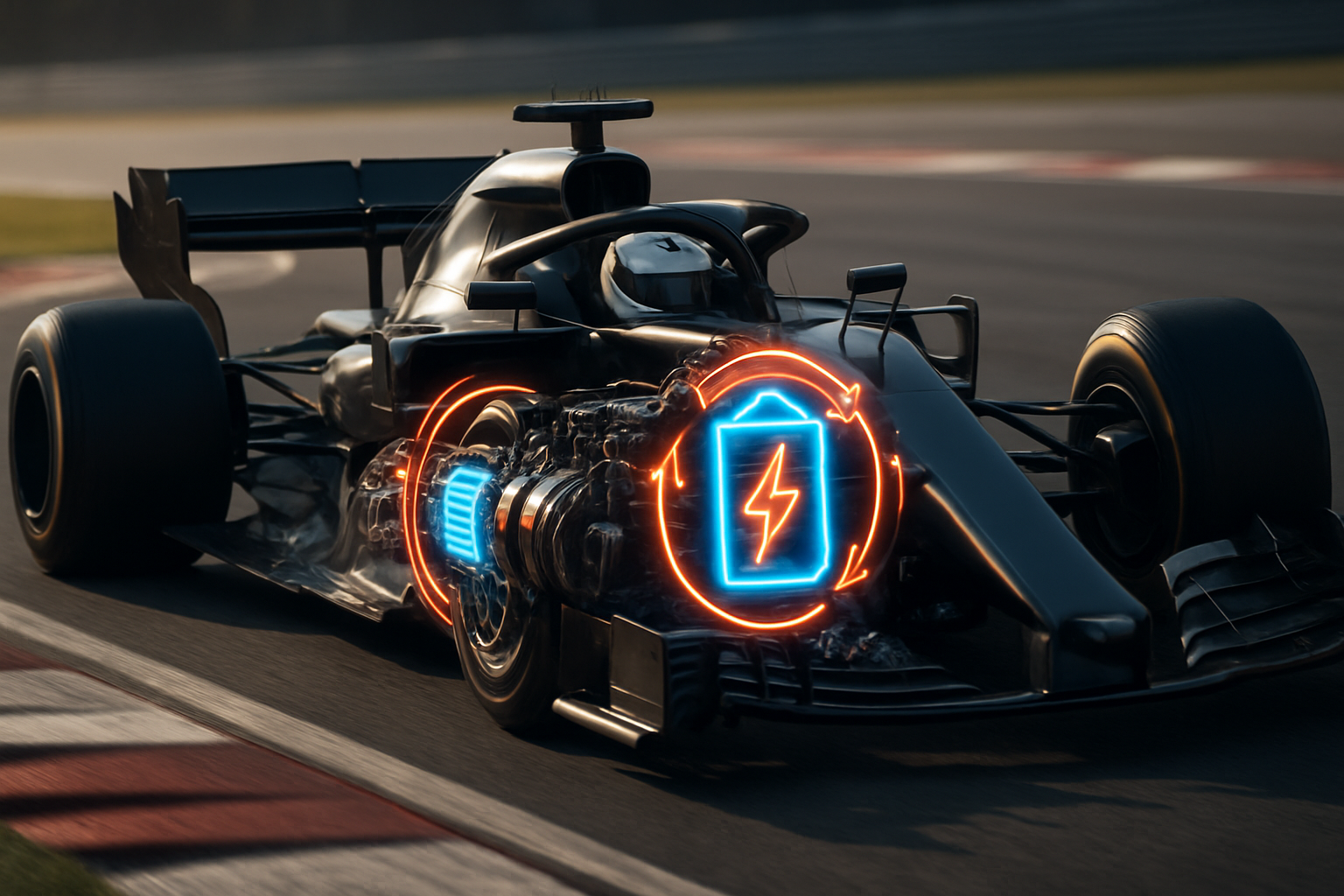Kinetic Energy Recovery Systems: Powering the Future of Racing
Buckle up, motorsport enthusiasts! We're about to dive into a thrilling realm where cutting-edge technology meets the raw power of racing. Imagine a system that captures the energy typically lost during braking and transforms it into a performance-boosting powerhouse. Welcome to the world of Kinetic Energy Recovery Systems (KERS), a game-changing innovation that's revolutionizing the way we think about speed, efficiency, and the future of competitive racing.

The journey from concept to reality was fraught with challenges. Engineers grappled with weight constraints, thermal management issues, and the complex integration of KERS with existing powertrains. Despite initial skepticism, persistent refinement led to significant breakthroughs, paving the way for KERS to become a cornerstone of modern racing technology.
How KERS Works: A Symphony of Mechanics and Electronics
At its core, KERS is an elegant solution to a complex problem. During deceleration, the system captures kinetic energy that would otherwise be lost as heat through the brakes. This energy is then stored, either mechanically in a flywheel or electrically in batteries, for later use.
When activated, KERS delivers a powerful boost of energy back to the drivetrain, providing an additional burst of acceleration. This process occurs in milliseconds, requiring sophisticated control systems to manage the energy flow seamlessly. The result is a harmonious blend of mechanical and electrical engineering that enhances both performance and efficiency.
The Impact on Racing: A New Dimension of Strategy
The introduction of KERS has fundamentally altered racing dynamics. Drivers now have an additional tactical tool at their disposal, capable of providing crucial overtaking opportunities or defensive maneuvers. The strategic deployment of KERS energy has become as critical as tire management or fuel conservation.
Teams invest considerable resources in optimizing KERS usage, tailoring their strategies to specific track layouts and race conditions. This added layer of complexity has elevated the role of race engineers and strategists, making real-time data analysis and decision-making more crucial than ever in securing victory.
Beyond the Track: KERS in Road Cars
The success of KERS in motorsports has sparked interest in its application to road vehicles. Automotive manufacturers are exploring ways to adapt this technology for everyday use, promising improved fuel efficiency and performance for consumer cars.
While the high-performance demands of racing require more complex and costly systems, simplified versions of KERS are being developed for road use. These systems aim to recover energy during braking and deceleration, storing it for use during acceleration or to power auxiliary systems, thereby reducing overall fuel consumption and emissions.
The Future of KERS: Evolving Technologies and New Frontiers
As KERS technology continues to mature, we’re seeing exciting developments on the horizon. Advanced materials and more efficient energy storage solutions are pushing the boundaries of what’s possible. Researchers are exploring supercapacitors and improved battery technologies that could dramatically increase the power and efficiency of KERS.
Moreover, the lessons learned from KERS are influencing the development of regenerative braking systems in electric and hybrid vehicles. This cross-pollination of ideas between racing and road car technology is accelerating innovation across the automotive industry.
Challenges and Controversies: Navigating the KERS Landscape
Despite its benefits, KERS implementation has not been without controversy. Critics argue that the added complexity and cost of these systems create a technological arms race, potentially widening the gap between well-funded teams and their smaller competitors.
Safety concerns have also been raised, particularly regarding the high-voltage systems used in electrical KERS. Rigorous safety protocols and fail-safe mechanisms have been developed to address these issues, but ongoing vigilance is necessary as the technology evolves.
KERS and Sustainability: Racing Towards a Greener Future
In an era where environmental consciousness is paramount, KERS represents a significant step towards more sustainable motorsports. By recapturing and reusing energy that would otherwise be wasted, these systems improve overall efficiency and reduce the carbon footprint of racing events.
This focus on sustainability is not only environmentally responsible but also aligns with the broader automotive industry’s shift towards more eco-friendly technologies. KERS serves as a proving ground for energy recovery systems that may eventually find their way into a wide range of vehicles, contributing to global efforts to reduce emissions and conserve resources.
In conclusion, Kinetic Energy Recovery Systems have ushered in a new era of racing technology, blending performance, strategy, and sustainability in ways previously unimaginable. As we look to the future, KERS stands as a testament to the ingenuity of automotive engineers and the endless possibilities that emerge when pushing the boundaries of what’s possible on and off the track. The race towards more efficient, powerful, and environmentally conscious vehicles continues, with KERS leading the charge into an exciting new frontier of automotive innovation.





